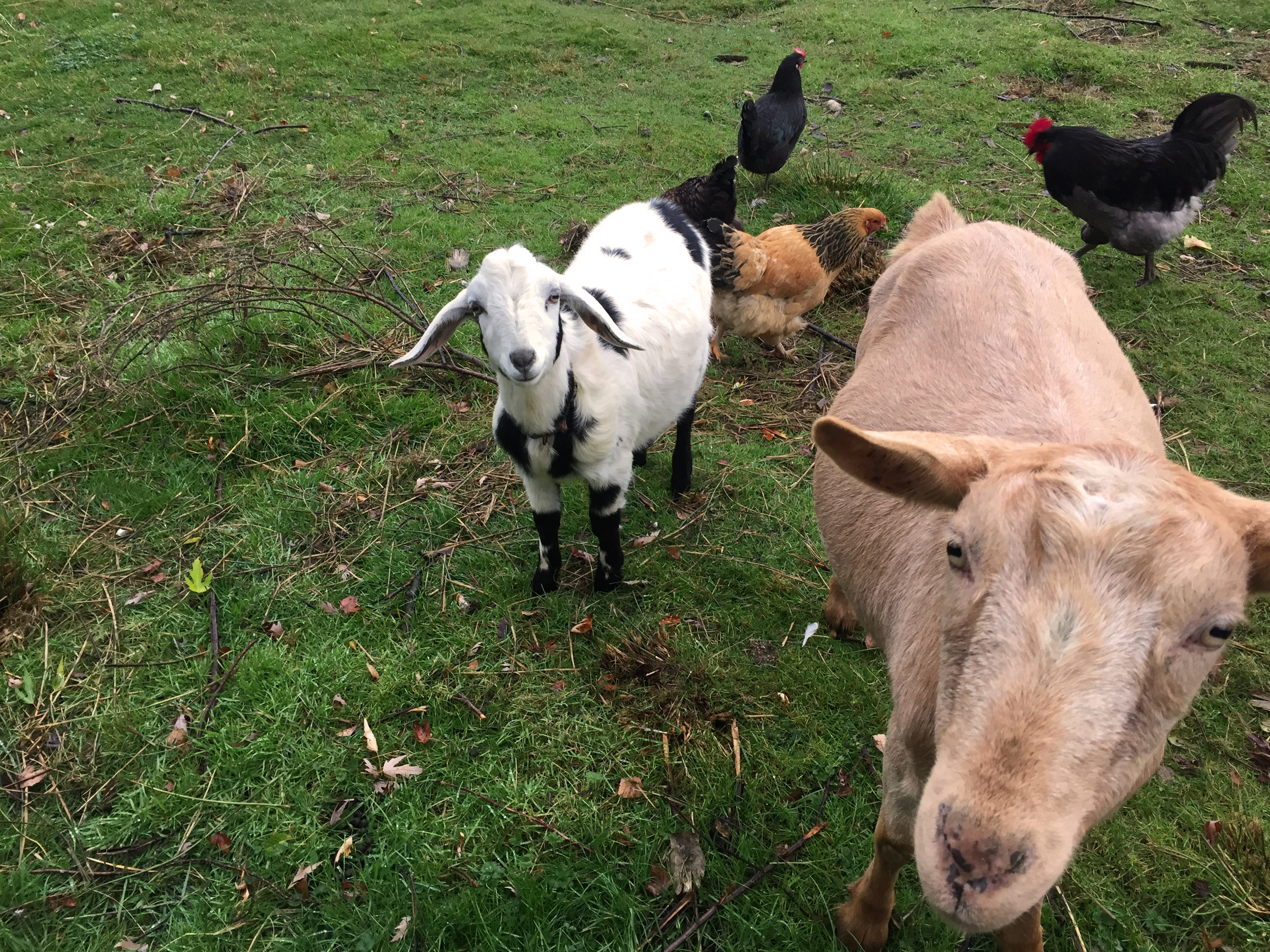Silvopasture for Small Livestock
/Being fortunate enough to live in the Maritime Pacific Northwest surrounded by the Salish Sea is something that many of us cherish. Our unique marine environment offers habitat to an abundance of marine and terrestrial flora and fauna that support our lifestyles and cultural heritage. However, balancing land use with protecting our natural heritage can be challenging, especially when you own livestock. Small livestock such as goats, sheep, pigs, and fowl can provide food, fiber, and fertilizer. They can also become sources of mud, water contaminants, and pathogens. While there are many best management practices (BMPs) that can help balance raising livestock with protecting natural resources, silvopasture is a practice that offers a multifunctional array of benefits to livestock and the local ecology.
Silvopasture is the practice of grazing livestock under trees with the goal of balancing the management of three components: tree crops, livestock, and forage. Trees are selected for their crop value (such as fruit or nut trees) or for additional forage benefits (such as honey locust, or willow). Combining the three components of silvopasture creates a synergistic system in which all components are more productive together than they would be separately. This creates a system that both increases economic potential while protecting and in many cases increasing the ecological health of the land.
Research shows that benefits include:
Trees – grow faster and wider in girth in a silvopasture system
Forage – stays productive longer into the season and has a better nutritional profile for ruminants than forage grown in open pasture. Forage is grazed more evenly and animal waste is spread and utilized more evenly
Livestock – show less overall stress, put on weight more easily, kid/calve better, and produce more milk than livestock grazing in open pasture alone
Ecological benefits of silvopasture are plentiful as well. Deep rooted trees and more productive forage grasses provide a “safety net” for water quality as they create a filter that takes up and utilizes nutrients from livestock before those nutrients can leach into groundwater or run into surface waters. Trees provide habitat for beneficial insects, birds, and small mammals, and can be a part of essential wildlife corridors across the landscape. The biological diversity of soils increases dramatically with the addition of trees creating soil health benefits to include: increased nutrient cycling, pest control, and increased water holding capacity. Such systems are also being studied for their potential to sequester carbon dioxide from the atmosphere providing a potential solution to climate change!
Silvopasture offers a multifunctional land use in which production and protection can be achieved on the same parcel of land at the same time. If you are interested in learning more about silvopasture or if you would like to see if silvopasture would be appropriate for your property please contact Carrie Brausieck, Natural Resource Planner with the Snohomish Conservation District, @ 425-377-7014 or cbrausieck@snohomishcd.org


